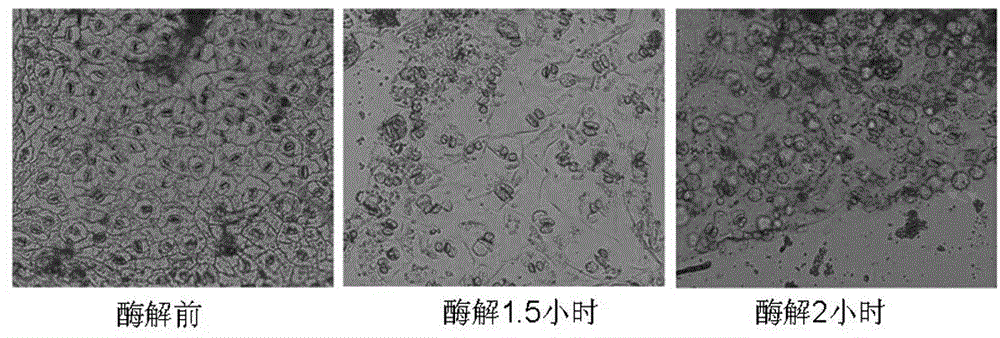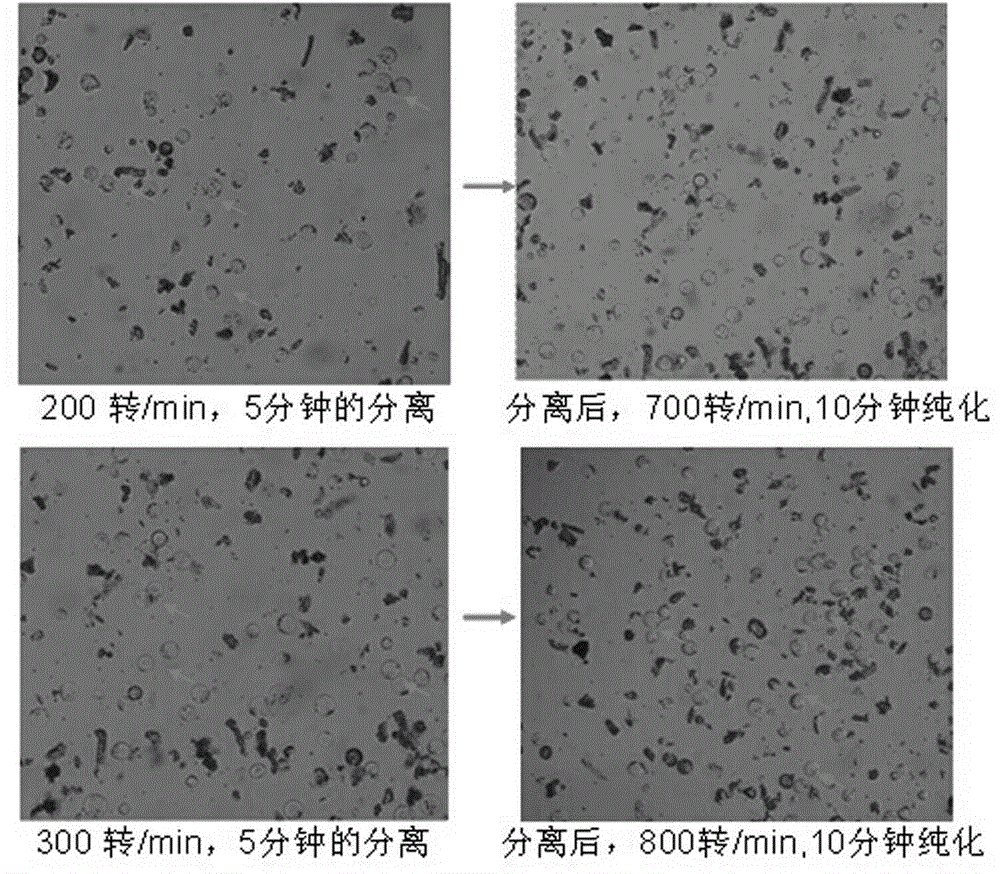Method for separating cotton guard cell protoplast
A protoplast and guard cell technology, applied in plant cells and other directions, can solve the problem of no description of separation and purification of cotton guard cells, and achieve the effect of shortening the experimental time, improving the experimental efficiency, and simplifying the experimental operation process.
- Summary
- Abstract
- Description
- Claims
- Application Information
AI Technical Summary
Problems solved by technology
Method used
Image
Examples
Embodiment
[0023] The method for separating cotton guard cell protoplasts includes the following steps:
[0024] (1) Take cotton seeds and induce germination;
[0025] In order to break the dormancy of cotton seeds, first soak the mature and full cotton seeds in a water bath at 80°C for 2 minutes;
[0026] Cotton seeds were induced to germinate under the conditions of 16 hours of light / 8 hours of darkness, light intensity of 22 KLux, temperature of 20~29℃, and relative humidity of 65%;
[0027] (2) Take the true cotton leaves 3~4 weeks after germination in step (1), rinse with sterile water, tear off the epidermal strips, transfer the collected epidermal strips into the enzymatic hydrolysis solution, and shake in a 23~28℃ water bath Free guard cell protoplasts within 1.5~2 hours, and the 20-fold microscopic results before and after enzymolysis are as follows figure 1 Shown
[0028] (3) Add 5-10 times the volume of the basic medium to the mixed solution after the enzymolysis in step (2), filter w...
PUM
 Login to View More
Login to View More Abstract
Description
Claims
Application Information
 Login to View More
Login to View More - R&D
- Intellectual Property
- Life Sciences
- Materials
- Tech Scout
- Unparalleled Data Quality
- Higher Quality Content
- 60% Fewer Hallucinations
Browse by: Latest US Patents, China's latest patents, Technical Efficacy Thesaurus, Application Domain, Technology Topic, Popular Technical Reports.
© 2025 PatSnap. All rights reserved.Legal|Privacy policy|Modern Slavery Act Transparency Statement|Sitemap|About US| Contact US: help@patsnap.com



